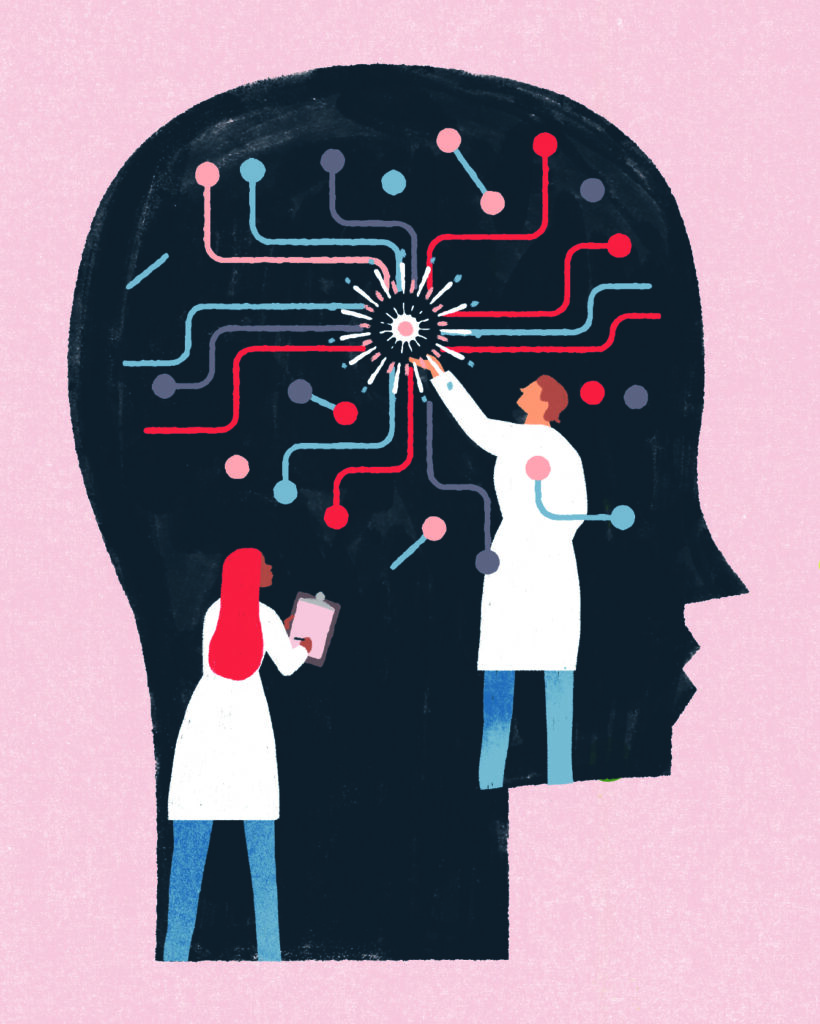Reviving cognition
Device restores brain function lost to injury

In 2001, Gina Arata was in her final semester of college, planning to apply to law school, when she suffered a traumatic brain injury in a car accident. The injury so compromised her ability to focus that she struggled in a job sorting mail.
“I couldn’t remember anything,” Arata said. “My left foot dropped, so I’d trip over things all the time. I was always in car accidents.”
In 2018, Jaimie Henderson, MD, professor of neurosurgery at Stanford Medicine, implanted a device deep inside Arata’s brain to electrically stimulate the central lateral nucleus, which regulates many aspects of consciousness.
Arata noticed a difference immediately: When asked to list items in a grocery store’s produce aisle, she could rattle off fruits and vegetables. Then a researcher turned the device off, and she couldn’t name any.
“Since the implant, I haven’t had any speeding tickets,” Arata said. “I don’t trip anymore. I can remember how much money is in my bank account. I wasn’t able to read, but after the implant I bought a book, Where the Crawdads Sing, and loved it and remembered it.”
Four others with traumatic brain injuries have benefited from the experimental procedure developed by researchers at Stanford Medicine and several other institutions.
The results are described in the Dec. 4, 2023, issue of Nature Medicine.
A need for TBI treatment
More than 5 million Americans live with the effects of traumatic brain injury — difficulty focusing, remembering and making decisions. Though many recover enough to live independently, their impairments prevent them from returning to school or work and from resuming their social lives.
“In general, there’s very little in the way of treatment for these patients,” said Henderson, the John and Jene Blume-Robert and Ruth Halperin Professor of neurosurgery, who shared senior authorship of the paper with Nicholas Schiff, MD, a professor at Weill Cornell Medicine.
The post-surgery progress of Arata and the other participants was measured by a standard test of mental processing speed called the trail making test. At the end of the 90-day treatment period, they had improved their speeds on the test by 32% on average.
“Our goal now is to try to take the systematic steps to make this a therapy,” Schiff said.
Read the full story here.


